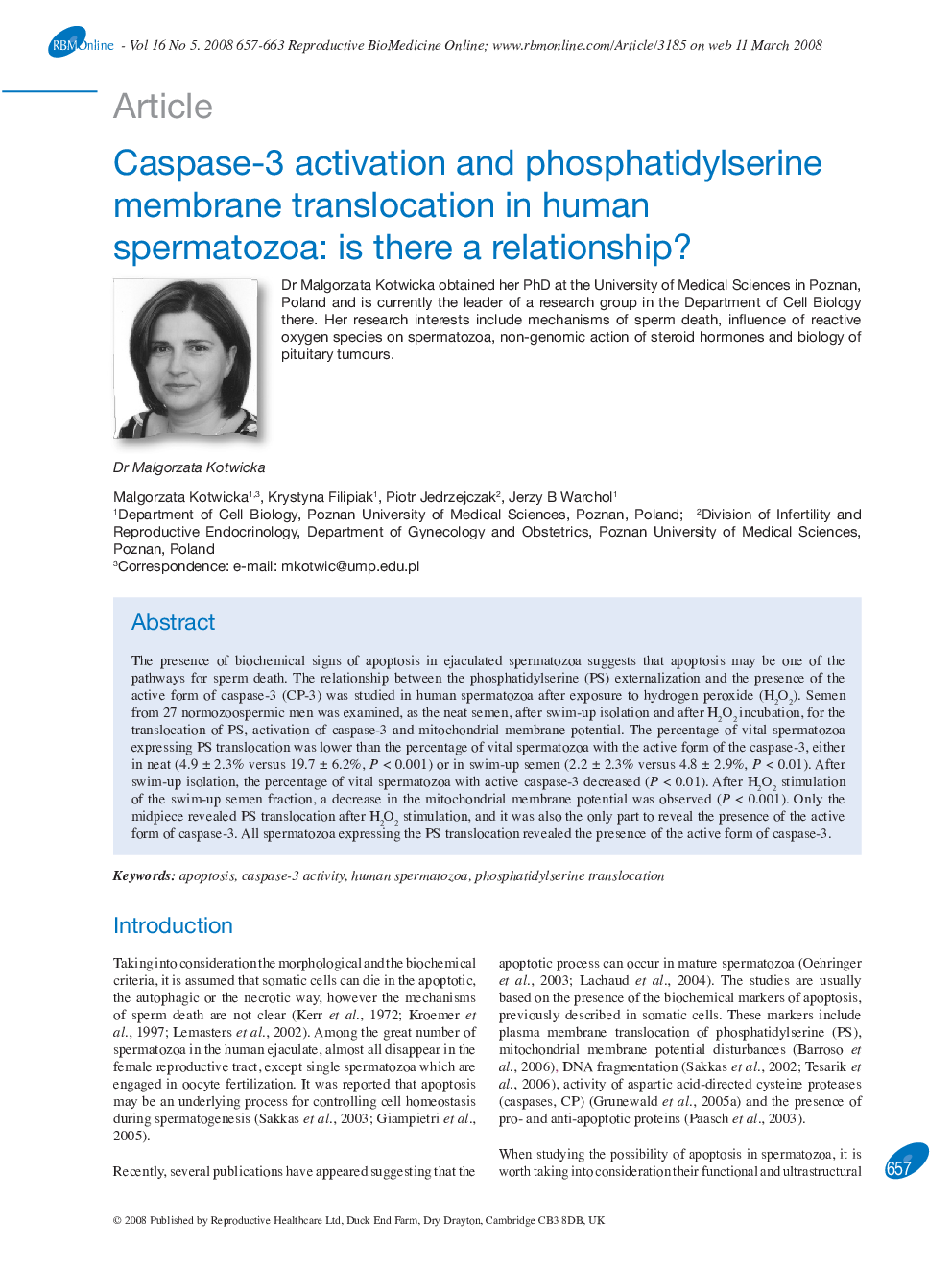| Article ID | Journal | Published Year | Pages | File Type |
|---|---|---|---|---|
| 3972452 | Reproductive BioMedicine Online | 2008 | 7 Pages |
The presence of biochemical signs of apoptosis in ejaculated spermatozoa suggests that apoptosis may be one of the pathways for sperm death. The relationship between the phosphatidylserine (PS) externalization and the presence of the active form of caspase-3 (CP-3) was studied in human spermatozoa after exposure to hydrogen peroxide (H2O2). Semen from 27 normozoospermic men was examined, as the neat semen, after swim-up isolation and after H2O2 incubation, for the translocation of PS, activation of caspase-3 and mitochondrial membrane potential. The percentage of vital spermatozoa expressing PS translocation was lower than the percentage of vital spermatozoa with the active form of the caspase-3, either in neat (4.9 ± 2.3% versus 19.7 ± 6.2%, P < 0.001) or in swim-up semen (2.2 ± 2.3% versus 4.8 ± 2.9%, P < 0.01). After swim-up isolation, the percentage of vital spermatozoa with active caspase-3 decreased (P < 0.01). After H2O2 stimulation of the swim-up semen fraction, a decrease in the mitochondrial membrane potential was observed (P < 0.001). Only the midpiece revealed PS translocation after H2O2 stimulation, and it was also the only part to reveal the presence of the active form of caspase-3. All spermatozoa expressing the PS translocation revealed the presence of the active form of caspase-3.
